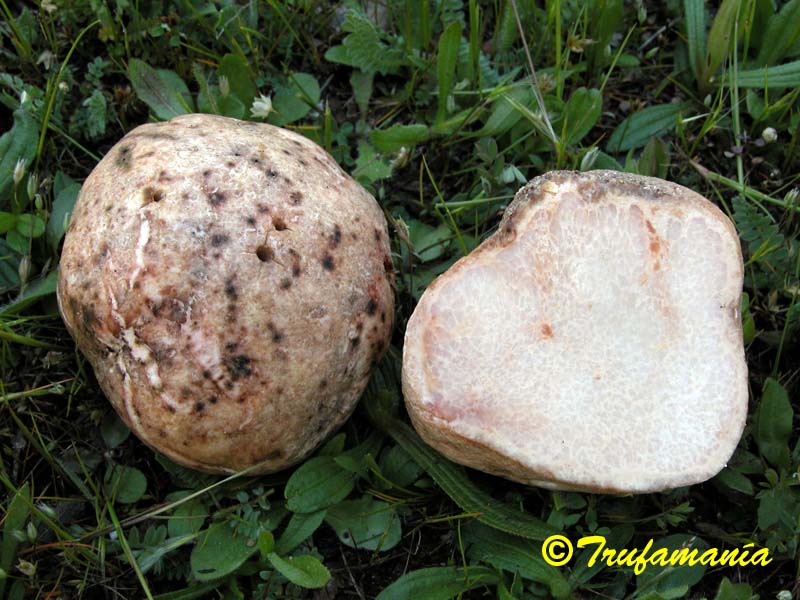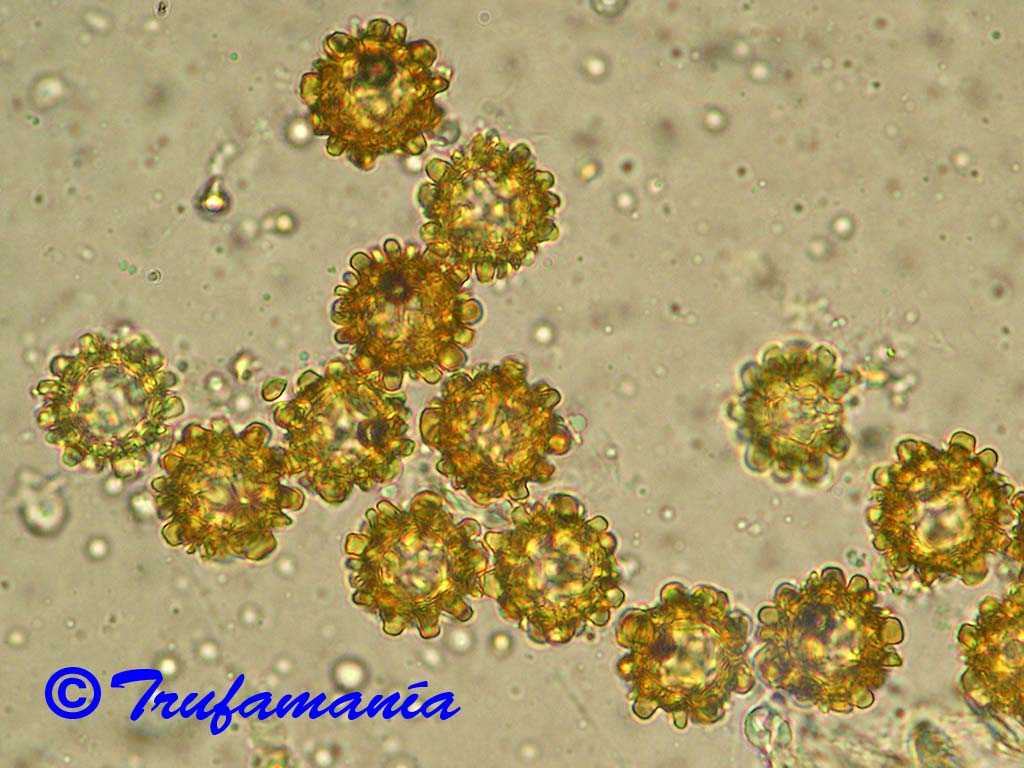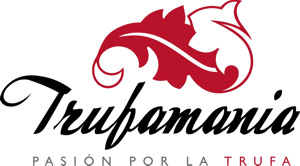TERFEZIA ARENARIA (Moris) Trappe
Trans. Br. mycol. Soc. 57(1): 90 (1971)

(Click on the picture to see more images)
Basionym:
Tuber arenarium Moris, Elench. Stirp. Sard. 3: 22 (1829)
Synonyms:
Choiromyces leonis Tul. & C. Tul., Annls Sci. Nat., Bot., sér. 3 3: 350 (1845)
Rhizopogon leonis (Tul. & C. Tul.) Payer, Bot. Crypt.: 100 (1850)
Terfezia leonis (Tul. & C. Tul.) Tul. & C. Tul., Fungi hypog.: 173 (1851)
Macroscopic characters:
Ascomata: hypogeous to partially emergent at maturity, 3–10(–15) cm in size, subglobose, turbinate, obpyriform, sometimes coalescent, often with tapered, sterile base, initially whitish with pink shades and black spots, darkening with age, finally brown, initially smooth, unpolished, sometimes cracked, associated with rapid growth.
Peridium: 2–3 mm thick, whitish pink salmon in cross section, prosenchymatous, composed of more o less inflated hyphae, thin-walled, 20–50 µm wide, sometimes arranged in parallel orientation, hyalines, yellowish in the outermost layers.
Gleba: solid, fleshy, succulent, whitish to pale pink at first, grayish, maturing to reddish brown pockets of fertile tissue separated by sterile veins concolours with peridium cross section, inconspicuous at maturity.
Odour: faint, no distinctive.
Taste: mild, pleasant, gastronomically prized.
Distibution, Habitat and Season:
Widely distributed in the western half of the Iberian Peninsula, areas with Mediterranean climate, very common in grassland of Extremadura, in acid, sandy, moist, well drained soils, exclusively associated with Tuberaria guttata, March through May. Its fruiting period is very dependent on rainfall and temperature, absent some years, when weather conditions are not suitable.

(Click on the picture to see more images)
Microscopic characters:
Asci: nonamyloid, globose to subglobose, sessile, 80–120 x 70–100 µm, with 6–8 irregularly disposed spores, randomly arranged in fertile pockets.
Ascospores: globose, 25–30 µm diam. including ornament, hyaline, smooth and uniguttulate at first, then yellow and ornamented with separate, truncated or rounded warts, up to 7 µm tall and 5–7 µm broad at maturity.
Comments:
The most distinctive characters of Terfezia arenaria are: big size, brown colour with black spots, associated with Tuberaria guttata, in sandy, acid soils, spores ornamented with prominent, truncated warts, looking like a cogwheel.
| Antonio Rodríguez trufamania@gmail.com antonio@trufamania.com |



